
Jonny Thompson has coached various top step mountain bike and motorsport athletes and guided them as they gain even more power and endurance to progress. A few of his clients include Kate Weatherly, Lauren Gregg, and Adam Brayton, on the mountain bike squad, with Jonny Walker and Brad Anderson repping the moto strength program. To date, over 1,000 riders from 40 different countries, ranging from professionals to weekend-warriors, have used the Fit4Racing program to improve their ride.
Having ridden mountain bikes most of his life, Thompson dug deeper into the sport during his twenties, training hard to find out how fast he could be on the trail. Year after year he found himself frustrated with the imbalance between fitness on the bike and strength training. One side of the training coin always seemed to be working to the detriment of the other, and no matter how much research and experimentation he endured, the aerobic and anaerobic elements of training continually arrived at an impasse.
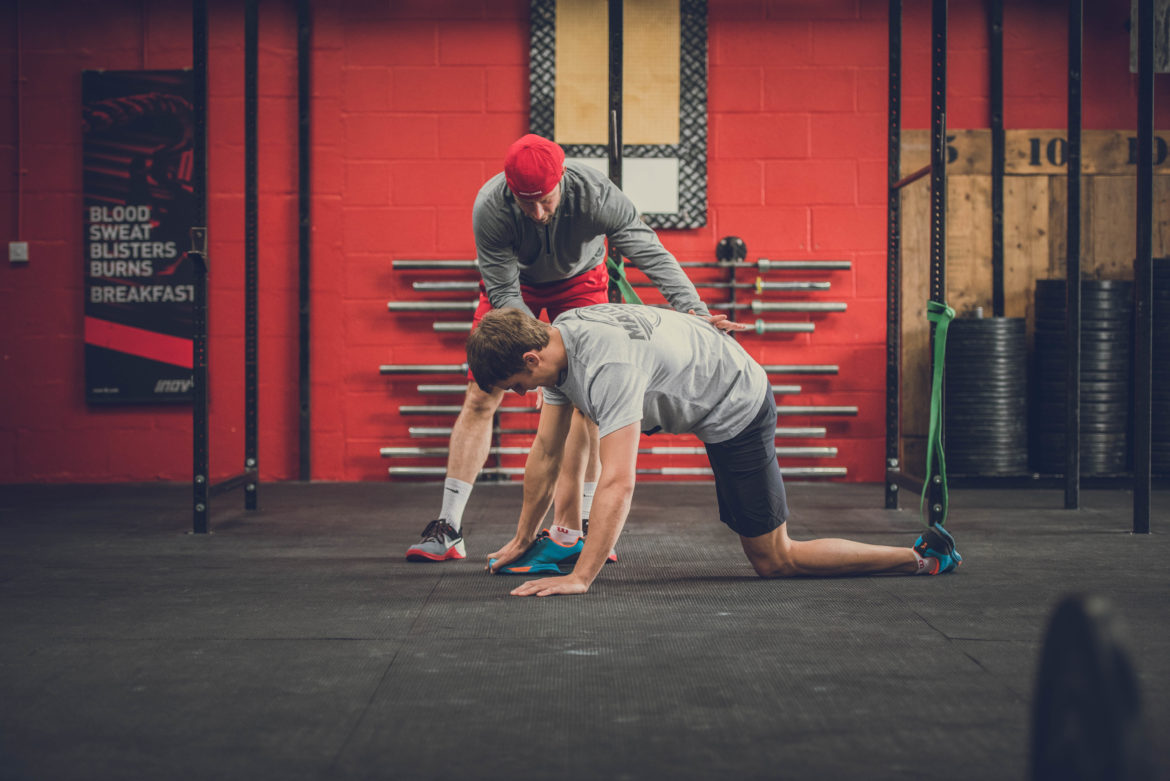
That training frustration shifted one spring when Thompson combined a new mix of exercise styles, resulting in a more synonymous relationship that allowed him to build muscle and endurance in tandem.
“For many years I gained strength in the winter when I wasn’t riding as much and spent more time in the gym. However, I felt by the time spring came around my bike fitness had dropped off massively, despite running and integrating traditional cardio work with my strength training. I knew a training balance was needed to be better at mountain biking but failed to find it. That was until one off-season I trained with a strength and conditioning approach, combining weighted movements and capacity work into varied and exciting workouts. That spring I not only felt stronger but my ability to ride longer, faster, and with more agility was astounding.”
In the years that followed Thompson found greater success in his own racing, and started helping friends and fellow racers with their training programs. He continued to educate himself on new and innovative ways to build muscle while increasing endurance, and in 2012 he opened the training facility that would eventually become Fit4Racing.
Thompson says that the program has now taken over his time and stoke alike. “I now spend 90% of my time developing and improving the Fit4Racing program to add more value each and every week calling on the experience of sports scientists, physiologists, nutritionists, physiotherapists, and of course videographers.”
Below we will dig directly into the unique elements of the Fit4Racing program, but first Thompson has some helpful training-related definitions.
- General strength is the production and/or resistance or force from gravity and/or external objects.
- Functional strength is the production and/or resistance or force in a defined environment with a specific goal, or purpose (in this case biking). Functional strength is a reflection of your physical ability over many areas, including power, therefore increasing it will prepare you for the many variables that MTB riding exposes you to.
- Absolute strength is your maximum measurable force production.
- Power can be defined as the maximum measurable force production over time. The difference then is the time component, i.e. the same force produced in a shorter time equates to more power. Let’s put that into real terms by looking at pedaling: increasing power increases your ability to drive the pedal faster and therefore ride quicker. Having high absolute strength without training for power would not necessarily mean an effective pedal stroke.
Thompson sums these terms up neatly with an automotive example. “Imagine a car. It has an engine that produces power. But, that car also has a rusty broken chassis that is about to fall apart, no oil or fuel and flat tires. If the function of the car is to drive faster, why increase the power of the engine as the primary goal? Increasing the power first (actually, the hardest thing to do) not only limits the top end speed but also increases the potential for a breakdown. This is the same as a rider increasing power without looking at what makes for the best performing rider — functional ability — which is often only as good as their weakest link.”
The Fit4Racing method
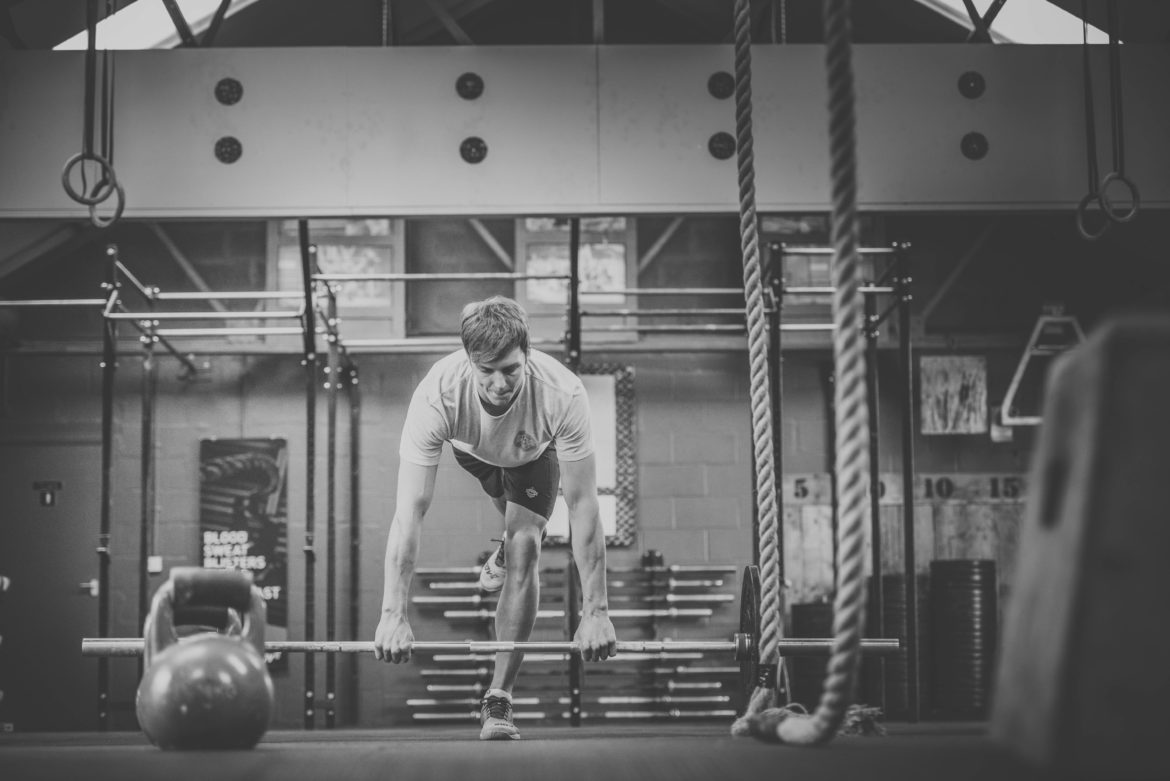
There are five unique training programs to choose from under the Fit4Racing banner, each designed to cover the specific strength and fitness needs of downhill, MTB enduro, motocross, moto enduro, and superbike racing. We specifically asked Thompson about the enduro mountain bike program, as it fits with the style of all day trail parties that many of our readers enjoy. Clients pay £45 (~$59) per month for the enduro program, which includes “a weekly video [with] a full description and breakdown of the movements, how the workouts should flow and how to scale the workouts.
Jonny says an effective program should be varied with a clear purpose for each day’s workout so riders not only perform movements effectively, but also safely. Workout videos, which include demos of each movement, are 10-20 minutes long depending on the training of the week.

“When riders sign up they receive an email with a week of tests […] to base weights and pacing off. In addition to that, they receive a nutrition guide written by EWS rider KJ Sharp, a mobility assessment with associated protocols for improvements and info on tapering and warm-ups. We are continually adding content exclusively for subscribers to the program.”
The enduro program is designed to help athletes improve strength, bike control, endurance, power, and periodized training.
One of the unique aspects of the Fit4Racing program is that it does not stick to a rigid schedule. The workouts are designed in a dynamic manner, so if clients want to go ride with friends, or have a chance to pedal in the sunshine instead of hitting the gym, they can. In fact, the high-intensity workouts can be completed in as little as two hours per week, leaving loads of trail time.
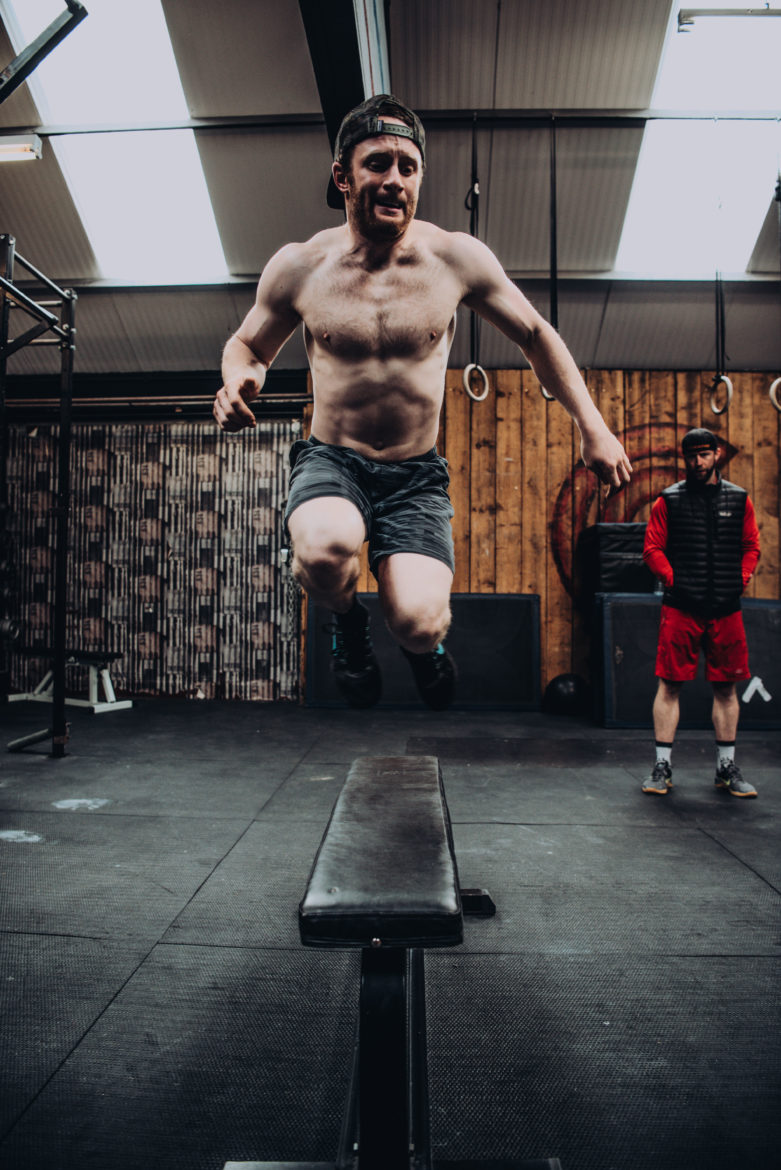
Regular Singletracks reader and privateer enduro racer Julie Baird has been working with Fit4Racing for a few months now and she is stoked to continue.
As I’ve gotten more into racing I’ve realized I should have a focus on strength training and never really have. I read the Singletracks article about Kate weatherly and she sounded like someone who has worked for everything she’s earned, so when she mentioned Jonny at Fit4Racing I checked out the website and bought a month of training to just try out. I liked that there was that ability to just buy a month worth and if it wasn’t something I liked I could cancel. After trying the workout program for a month I have to say I’m pretty impressed. It is very challenging and I love how he is consistent and thorough in his instructions. Every Sunday night I can count on getting an email and it has the workout along with a YouTube tutorial on each day’s specifics. The visual is very helpful. The workouts have a lot of attention on grip strength and power which I love and hate because it’s so hard! He also pays attention to the warm up and has good videos on hip and shoulder mobility. The workouts are always dynamic with a strength piece and cardio challenge followed up with core work.
You may be thinking, “enduro is just pedaling uphill while chatting with friends, then a party on the way down, so why do I need to worry about all of this specific training?” Thompson has a thoughtful answer to that query. “Enduro is such a demanding sport, not only do you have to produce force for a sustained time [on the transitions], you have to recover quickly and switch to a very explosive, aggressive short effort with super high demands on agility, speed, and power. Because of this, it is difficult to suggest a ‘main focus area,’ however if your capacity sucks, you can’t ride hard for long and if your functional strength sucks you can’t move you or your bike well.”
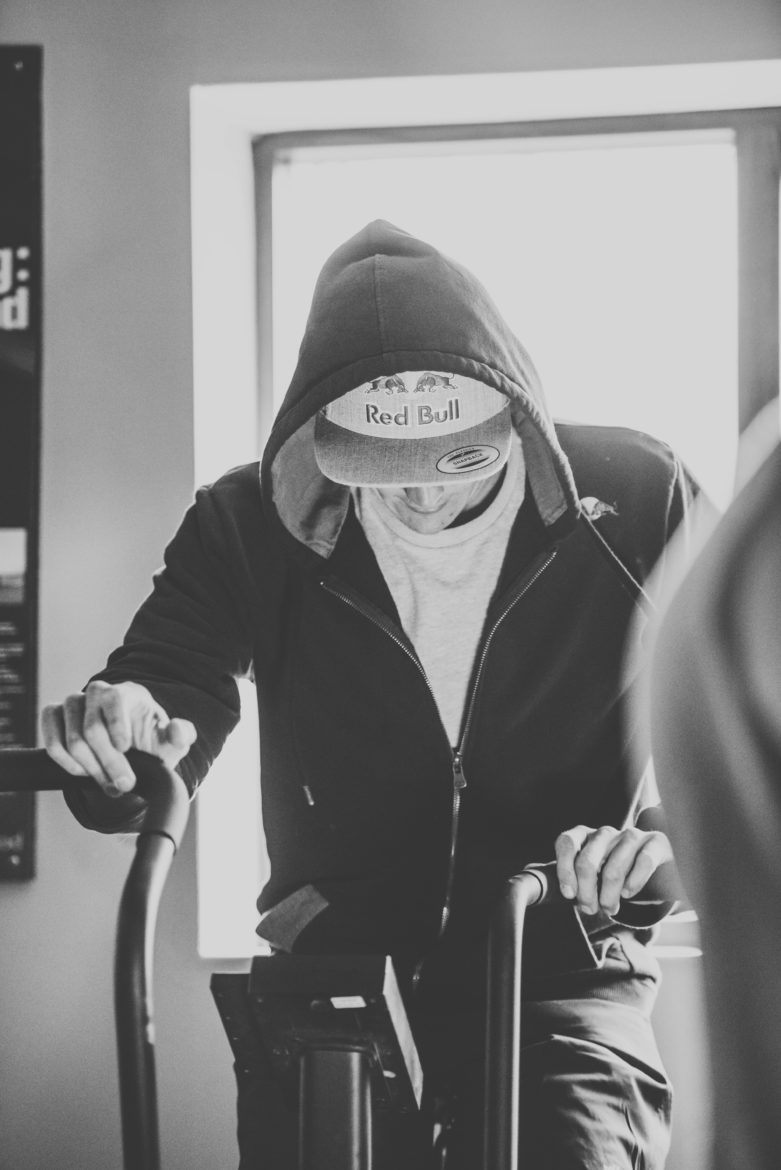
“Consider this – increase your capacity and functional strength by incorporating large compound (full body) movements into workouts that involve longer duration capacity efforts. It’s all well and good training strength and capacity separately, which can work to a point, but doing them together is where the magic happens. As an enduro rider, you need to be strong whilst under fatigue, this is the nature of the sport so your training should reflect that. This single piece of advice will increase your riding ability massively.”
New Zealand’s twice crowned Downhill National Champion, Kate Weatherly, has her sights set on World Cup podiums this year, and she has Fit4Racing backing her up in the power department.
Working with Jonny from Fit4Racing this offseason has massively improved my riding ability and fitness on the bike. Although max strength and power output has never been much of an issue for me, as I really enjoy lifting weights in the gym, I found I couldn’t really apply that strength on the trails beyond sprinting out of the start gate. The kind of training Jonny does has helped me take that strength […] add an element of time/speed to workouts, [and] it has helped me be able to reapply that strength again and again down a trail. On longer enduro stages or DH tracks like Andorra or Fort William this makes all the difference. Being strong and aerobically fit is very important to be a fast mountain biker but that strength needs an element of capacity to be applicable, especially for a 3-5 minute downhill run.
With an idea of how the program functions, what methods and definitions Thompson employs to build workouts, and what pro level riders think of their experiences with Fit4Racing, let’s take a look at two examples workouts.
Sample workouts
All of the workouts and words below are courtesy of Jonny Thompson.
Try this workout and see how different it feels from doing each element separately.
5 rounds of:
- 400m run
- 20 Lunges with Kettlebells (24kg/16kg)
- 15 Toes to bar
- 9 burpees
Understandably not everyone has access to a gym or can build a suitable home gym, but the reality is it would be very difficult to get top end performance training, especially strength, without a gym or some form of weights. […] Ultimately, a good strength base will help increase your speed, power and muscular endurance,” says Thompson. “Even very long duration endurance athletes benefit from load-bearing exercise. That being said, if you are new to strength and conditioning you can make great initial strength increases with bodyweight movements. Let’s say you only have a one hour lunch break and you can’t access a gym but want to do something to increase your on-bike performance, try this workout:
Three rounds of:
- 400m run
- 50 air squats
- 400m run
- 50 sit-ups
- 400m run
- 50 jumping alternate lunges
- 400m run
- 15 burpees
Knowing why you are training gives you an opportunity to spend time on the things that count most. Time is something a lot of us struggle with, maybe making it to the gym 2-3 times a week and riding at weekends where possible. When you are limited on available time why put hard work into something that isn’t going to contribute to becoming a better rider? In fact, some of the things you could be doing might be making you a worse rider! You might think pro MTB riders spend 10+ hours in the gym each week, but you’re wrong. They might get more bike time than you but you can certainly do an hour, 2, 3 or 4 times a week and be doing the same, if not more strength and conditioning than some of the world’s best riders. It just comes down to purposeful bang-for-buck training.

Do’s and don’ts of training
Finally, Thompson has key pointers for a healthy training regiment to help readers who are looking to improve their ride.
Do
- Full body (compound) movements such as squats, lunges, deadlifts, rows, pressing, pull-ups. The larger the movement the more impactful!
- Vary movements, loads, times, distances, and intensities every time you train. This will keep your body guessing and making continual progress.
- Stay consistent. If you can only train twice a week make sure you do, every week.
- Move with purpose. Have a plan for the gym and make sure you get the most out of the time you have available.
- Take a “de-load week” every 4-5 weeks if you have been consistently training throughout. This will allow you to recover and regroup ready for the next few weeks.
- Give recovery the respect it needs, including nutrition, mobility, sleep, hydration, and active rest.
Don’t
- Don’t isolate individual muscles by doing bicep curls, leg extensions, hamstring curls, etc. This is reverse engineering your body and will leave weak areas. You are only as strong as your weakest link and you can end up with muscles that don’t work together.
- Don’t spend time on Olympic weightlifting, high-level gymnastics or any “specialist” movements unless you: 1. Have loads of time to learn them well, 2. Understand how to incorporate them into becoming a better rider, 3. Can do them safely, and 4. don’t focus on them to the detriment of other areas which may contribute more to your riding.
- Don’t repeat the same workout and expect the same improvements. Your body is clever, it doesn’t want to do more than is needed so it will adapt and stop making progress if exposed to the same stimulus each time you train.
- Don’t go to the gym five days one week and none the next. This means not “making up” for lost time.
- Don’t spend time on things that don’t contribute to your needs. If you are warming up, mobilizing or doing reps have to be for a purpose. Don’t waste crucial time and energy pretending or going through the motions. Make. It. Count.
- Don’t expect that training hard can reverse the effects of a poor lifestyle. Sleep well, stretch, eat your greens, and drink plenty of water every day.
Johnny says, “this has just scratched the surface but I hope the information in this article contributes to you becoming a better rider or at least helps you spend your training time more wisely. If you want any further information or help with your training subscribe to our YouTube channel (Fit4Racing) or sign up to one of our programs at www.fit4racing.com I’m open to emails and messages so feel free to contact me directly.”
Thanks to Jonny Thompson for taking the time to share all of this helpful information with our readers. No matter your level of fitness and shreddy prowess, gaining strength and agility will make the ride more fun.












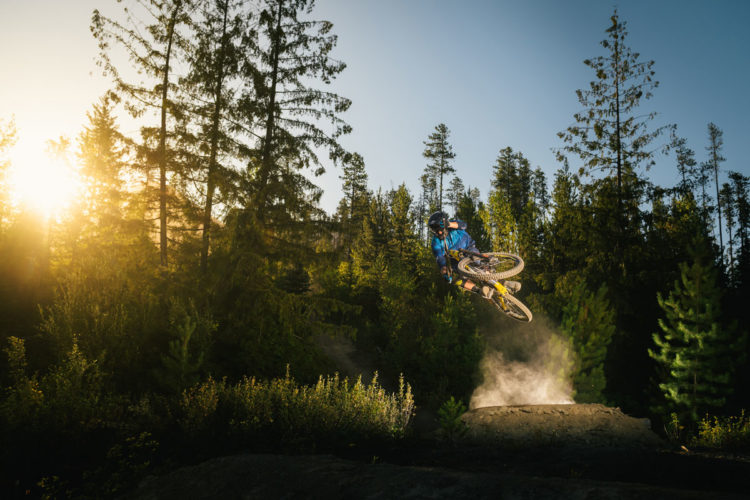

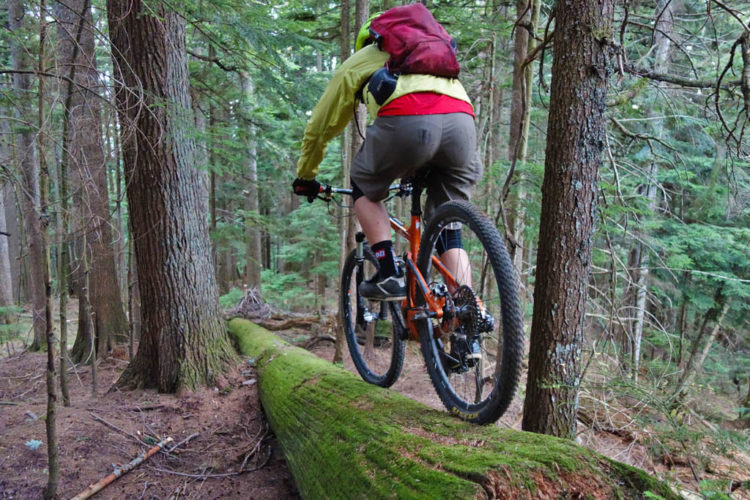





0 Comments